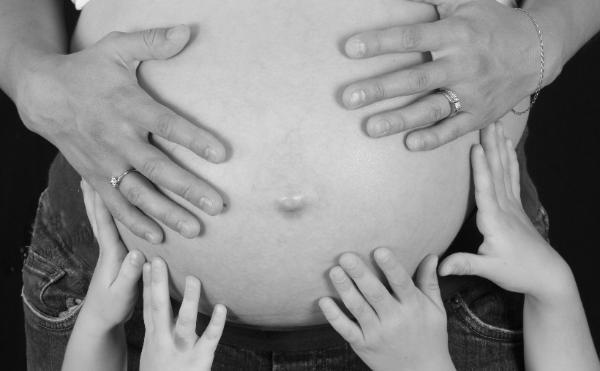- 25-50% of baby's blood volume is in the placenta and cord immediately after birth.
- In the minutes following birth, baby's circulatory system retrieves exactly the amount of richly oxygenated blood he or she needs.
- Premature cord clamping cuts off baby's oxygen supply from the placenta before the lungs begin to function, which is essential for brain function.
- Babies whose cords are clamped and cut prematurely are more likely to have respiratory problems, need resuscitation, need a blood transfusion, and/or be anemic.
- Cord blood provides baby with his or her own essential stem cells when the cord is allowed to continue pulsating until it is physiologically finished.
Research also shows that pushing in upright positions on the mother's cues and instincts is more beneficial for both mother's and baby's health in the majority of instances. Here's an excellent 2 minute video clip on pushing positions. Although many OBs and midwives routinely practice active 3rd stage management (including immediate cord clamping and cutting, cord traction and fundal pressure to assist delivery of the placenta, and routine Pitocin shots), much has been written that suggests that these practices can cause many of the same problems they purport to prevent, such as hemorrhage.
Below are photos which two mothers have graciously given me permission to publish. They illustrate the difference in appearance of placentas after pushing on instinct in an upright position, physiologic 3rd stage management, and delayed cord clamping, versus placenta after directed pushing in lithotomy position (on her back), active 3rd stage management, and immediate cord clamping. These educational photos are graphic, therefore I'm giving fair warning to anyone who does NOT want to view photos of placentas.
*please continue to scroll down to see photos of placentas
*please continue to scroll down
*please continue to scroll down
* You can't say I didn't warn you if you haven't closed this page by now.
The first is a placenta after delayed cord clamping and cutting (30 or so minutes after the birth). The mother pushed on her body's cues in an upright position. She had a waterbirth and delivered the placenta into the birth pool on her body's cues about 30 minutes after the birth, then the placenta was transferred into this bowl right away. The amount of blood that was delivered with the placenta was so minimal that it did not even change the color of the water.
The next photo is of a placenta delivered after active third-stage management. The mother pushed in the lithotomy position (on her back) with directed pushing. The cord was clamped and cut within seconds after the birth. While the mother was still on her back, the midwife directed when and how to push the placenta out, while she gave cord traction. (This was not nearly all of the blood that was delivered with the placenta. It came out with a gush of blood, much of which went directly into a biohazard bag at the end of the bed.) I realize that much of this blood was mother's blood, not baby's blood (placental blood), but it still shows an interesting difference between examples of pushing on instinctive cues and directed pushing; between watchful waiting and active third-stage management.
It is an interesting pictorial of the variations of third stage management, placentas, and cords.
I have a collection of links (including NIH, Cochrane Review, and PubMed research) on delayed cord clamping and the consequences of routine cord clamping here. I continually add to this bookmark site.
Here is Midwife Thinking's blog post on the role of the placenta and cord in the newborn transition.
Edited to add: Even in the case of C-section, moms can request delayed cord clamping (barring unexpected complications). It's being done safely in some major hospitals by OBs who are meeting consumer demands for delayed cord clamping and other options for a family-centered cesarean. You can read more about family-centered cesareans on ICAN's White Papers and here at Preparing For Birth's sample birth plan for family-centered cesarean. Preparing for Birth is owned by Desirre Andrews, who is ICAN's president as well as a childbirth educator and doula. Family-centered cesareans are another post for another day.











